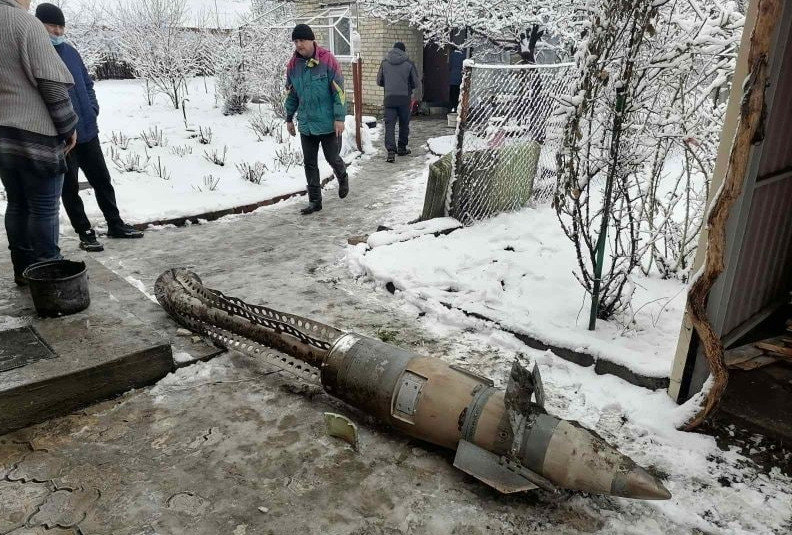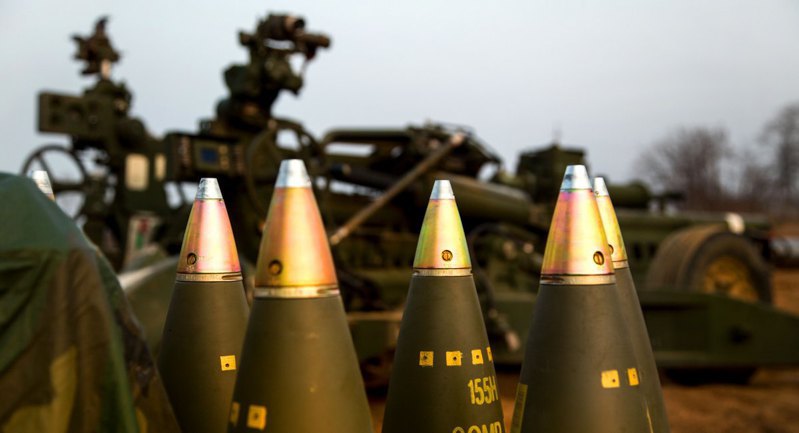
That's why, for example, German M270's software cannot work with cluster rockets, this would require the firmware to be changed.
Surely modern Germans, like some fascists from the past, cannot use indiscriminate weapons that, in theory, could harm not only enemy troops?
Of course not, they discard such weapons and condemn their use.
And again, it was not by choice that the Americans developed expensive M30A1 with tungsten bullets.
They did this to ensure the effective destruction of the upper hemisphere by means of aerial detonation when it comes to berms, trenches, or the thinnest part of the armour.
And, at the same time, to avoid the problem of unexploded submunitions. In parallel, a programme was underway to equip them with self-defusers.
However, it is not easy to recycle hundreds of thousands of units, even for a hegemonic country.
Still, we have no time to be sentimental - the south has already been stuffed with mines like a Christmas cake.
PMN anti-personnel mines, Tropa mine-clearing charges, several MON anti-personnel mines, all arranged in a single system and reinforced with landmines, and various PFM-1 Lepestok anti-personnel mines.
The Russians do not give a damn about any conventions, not only those concerning anti-personnel, but also cluster munitions.

They hit Kharkiv's Saltivka or Industrialnyy neighbourhoods with cluster munitions, trying to nail our units in an industrial zone
That's why, by the way, we often saw photos of Defence Forces soldiers from underground parking lots and factory bomb shelters - these were islands of safety, while the city itself was being brutally bombarded, including by 9M55K5.

Neither densely populated residential neighbourhoods nor conventions stopped the Kremlin.
However, just like the USA, we haven't signed and ratified the convention either.
So when the Kremlin murderers mumble about seeking a response to the supply of cluster munitions and rockets, they should recall their bloody deeds in Kharkiv and northern Ukraine more often. Because they did not use Smerch and Uragan with cluster munitions just sporadically.

This is the world's response and reaction to their actions, not vice versa.
The entire Russian invasion is one gigantic war crime – the condition in which our prisoners are being returned, torture, extrajudicial killings, lists of activists to be eliminated, strikes on cities with cluster munitions and on regular houses with anti-ship Kh-22 missiles.
Anything that can stop this invasion here and now is good for us. We will think about the problems with demining later – unfortunately, it will be a matter of several generations.
Every day that the Russians stay in the south means more mines being laid to try to stop our advance. So this is a conscious choice.
The supply niche is clear.
At the moment, there is a long-arm war going on – counter-battery fighting and destroying the tactical rear.
Just like we did in Kherson, when we had fewer drones, high-precision projectiles, and modern self-propelled artillery systems.
Despite the fact that the fighting on the line is more fierce, it is a little easier for us now than it was then, a paradox.
In addition to nomadic guns, batteries and rocket artillery, the desired targets will be radars, command and communications box trucks, places where enemy "birds" take off and receive signals, electronic warfare vehicles, and tactical air defence launchers.
If I were to describe this strategy briefly, it would be something like this: to push away from the line what prevents us from adjusting fire and strike deeper.
To do this, we need to stay in the air longer, extend the average life of a drone and increase the speed of signal transmission from all types of reconnaissance to our weapons.
That's why, by the way, the new US assistance package includes Penguin UAVs.

This high-tech drone has an autonomous flight time of up to 20 hours, a catapult launch that does not require a prepared site, a night channel with a camera with good zoom, and a payload of 25 kg. It is a pure adjusting drone, not a strike drone.
Tracking down/defeating the target in the operation in the south will be crucial.
A typical example of how this works? Our artillery is mowing down the green zones, and a group on a Kirpi armoured troop carrier enters and starts storming the trenches and dugouts.
Enemy batteries and mortars come to life.
They need to be knocked out, but we also need to take down everything that jams the signals of our UAVs, to beat the Strela, Osa and Pantsir missile systems in the second line, which can deprive us of "eyes" in the sector.
All the targets are actively manoeuvring across the area.
The Zhitel EW jamming station was here one moment, sending out waves, and in a few minutes it lowered the mast and changed its position.
The battery of a self-propelled gun is dispersed and camouflaged in a green zone.
While one battery of towed howitzers changes position, the other one opens fire.
This is not a theory, we are working hard on such targets – only yesterday we destroyed Grad, Nona, Gvozdika, Acacia and Msta (almost a full house), and before that, we damaged EW vehicles.
This reduces the spending of high-precision weapons - Excalibur, depending on the modification, costs 120,000-170,000 dollars. And this price is rising – 5% dollar inflation per year is no joke.
We have been given 2 million shells of various calibres, and NATO's stockpiles in Europe were scraped out to the bottom so that the United States opened up its stockpiles in the Asian and Middle Eastern theatres.
Right now, the USA alone has several hundred thousand cluster munitions in its arsenals – about 400,000.
Combined damage – the ammunition has both fragmentation and cumulative effects. Now it is possible to hit both a tank on the position and an AGS in a gap nearby. Or a D-30 and its crew hiding in a gap.
The tactical level for cluster munitions is a rapid defeat of fast-manoeuvring targets.
The operational level includes using advanced Western self-propelled guns, drones, smart shells and cluster munitions to knock out enemy support assets, suppress artillery, and isolate the battlefield near Bakhmut or Robotyne.
The strategic option is to wait for the production of shells to increase and for the 155-mm batches already ordered in several Allied countries to be delivered.
This will not be a game-changing weapon, but it is an effective delivery that is long overdue and will allow us to continue the active phase of the offensive. This is what we have been asking for for months. This is good news.








